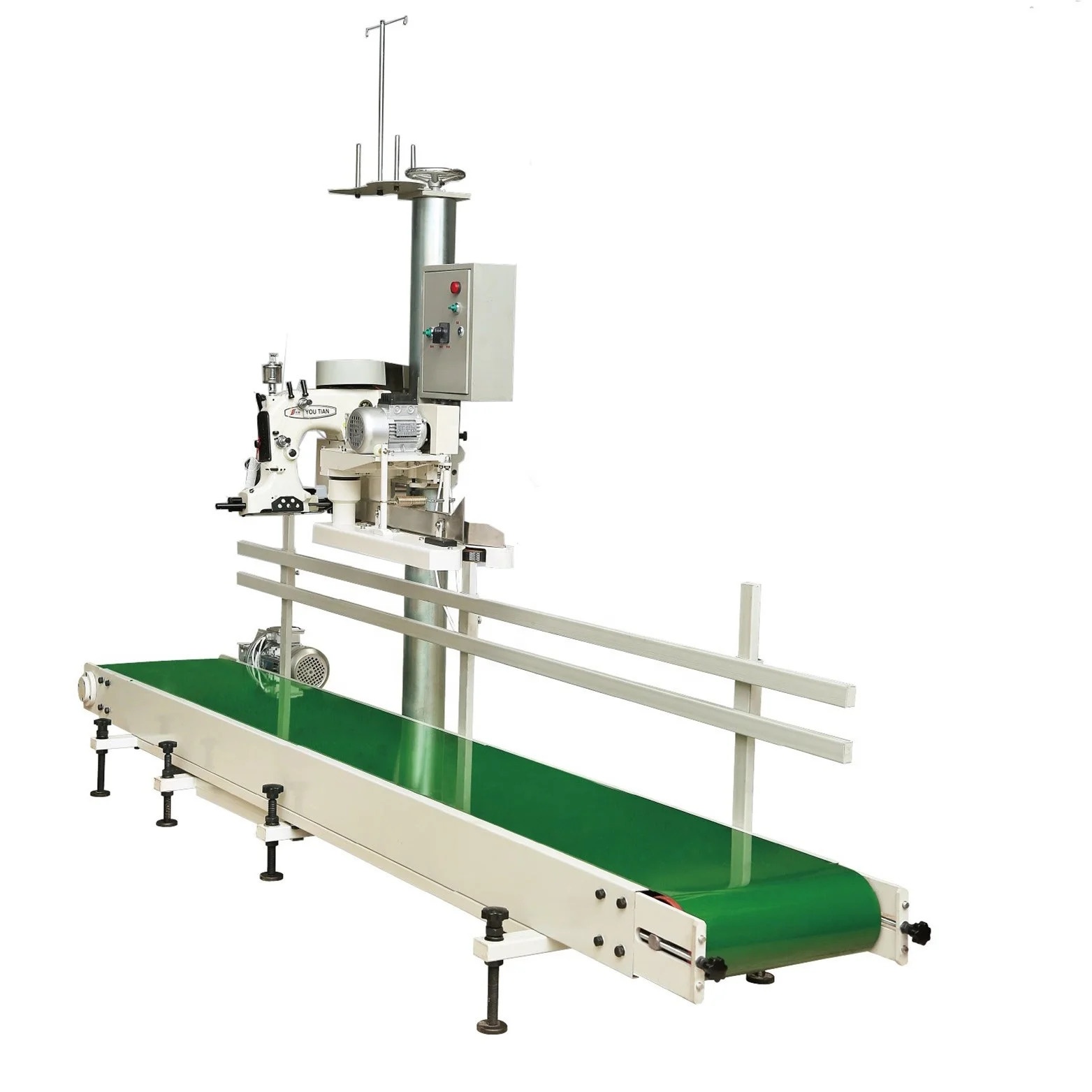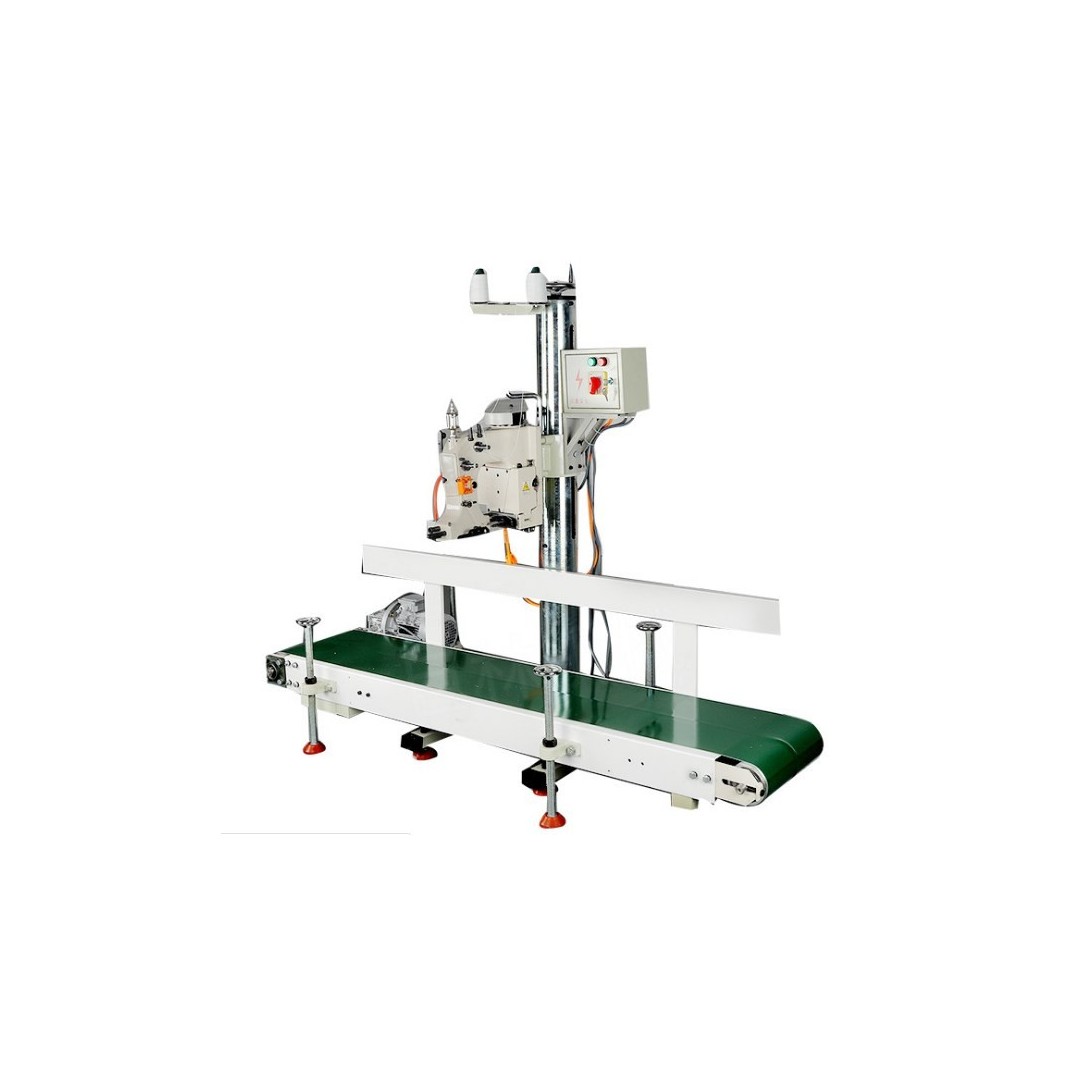. Robust Stitching Mechanism: Equipped with a heavy-duty stitching mechanism capable of securely closing bags containing bulk materials, ensuring durability during transport and storage.
2. Integrated Belt Conveyor: Features an integrated belt conveyor system for seamless material handling, improving the efficiency of the bagging process.
3. Adjustable Conveyor Speed: The belt conveyor comes with adjustable speed settings, allowing flexibility to match the pace of the bagging operation and enhance overall efficiency.
4. High Stitching Speed: Engineered for high-speed stitching, optimizing productivity in heavy-duty bag sealing applications.
5. Adaptable Bag Sizes: Designed to handle a variety of bag sizes and materials, offering flexibility to meet diverse industrial packaging requirements.
6. User-Friendly Controls: Modern machines feature user-friendly controls, often with a touchscreen interface, facilitating easy adjustments and operation monitoring.
7. Durability in Design: Constructed with durable materials to withstand the demands of heavy industrial use, ensuring longevity and reliability.
8. Safety Features: Incorporates safety measures to protect operators during the bagging and stitching process, prioritizing workplace safety.
9. Low Maintenance: Engineered for ease of maintenance, reducing downtime and ensuring continuous operation in industrial settings.
10. Versatility: Suitable for sealing bags containing various bulk materials such as grains, aggregates, chemicals, or construction materials.
In summary, a heavy-duty stitching machine with a belt conveyor is a robust solution for industries requiring efficient and secure closure of heavy bags. It combines advanced stitching technology with material handling capabilities, enhancing the overall effectiveness of the bag sealing process in industrial applications.





